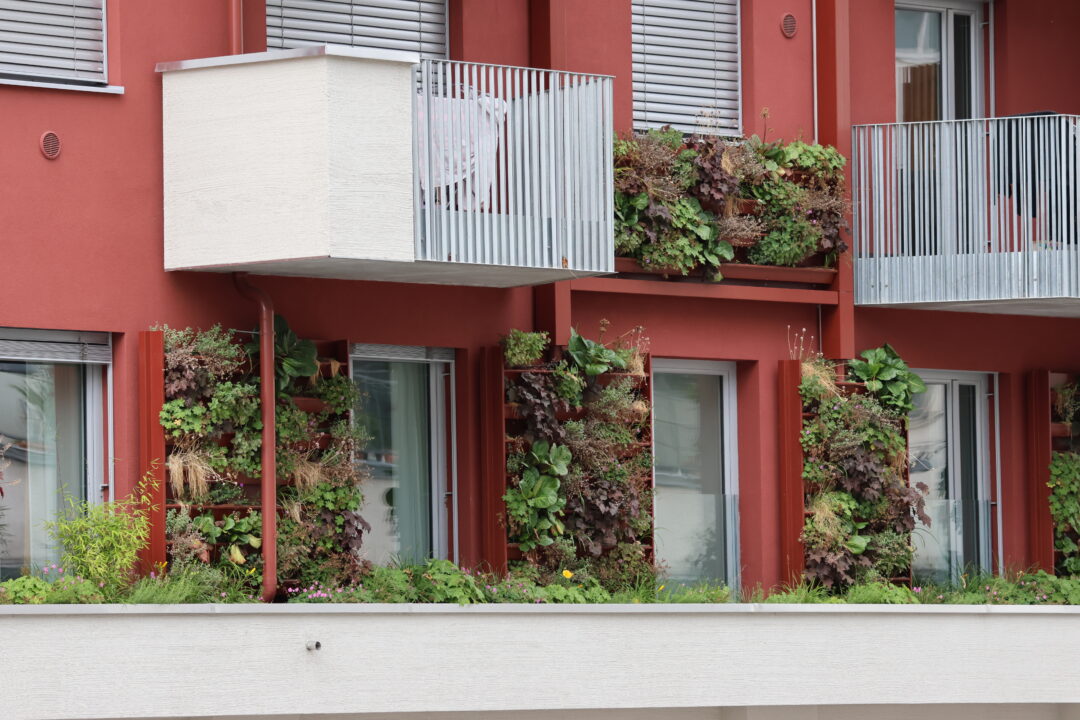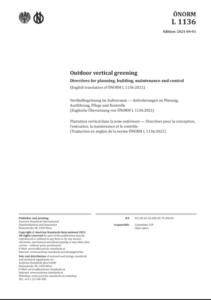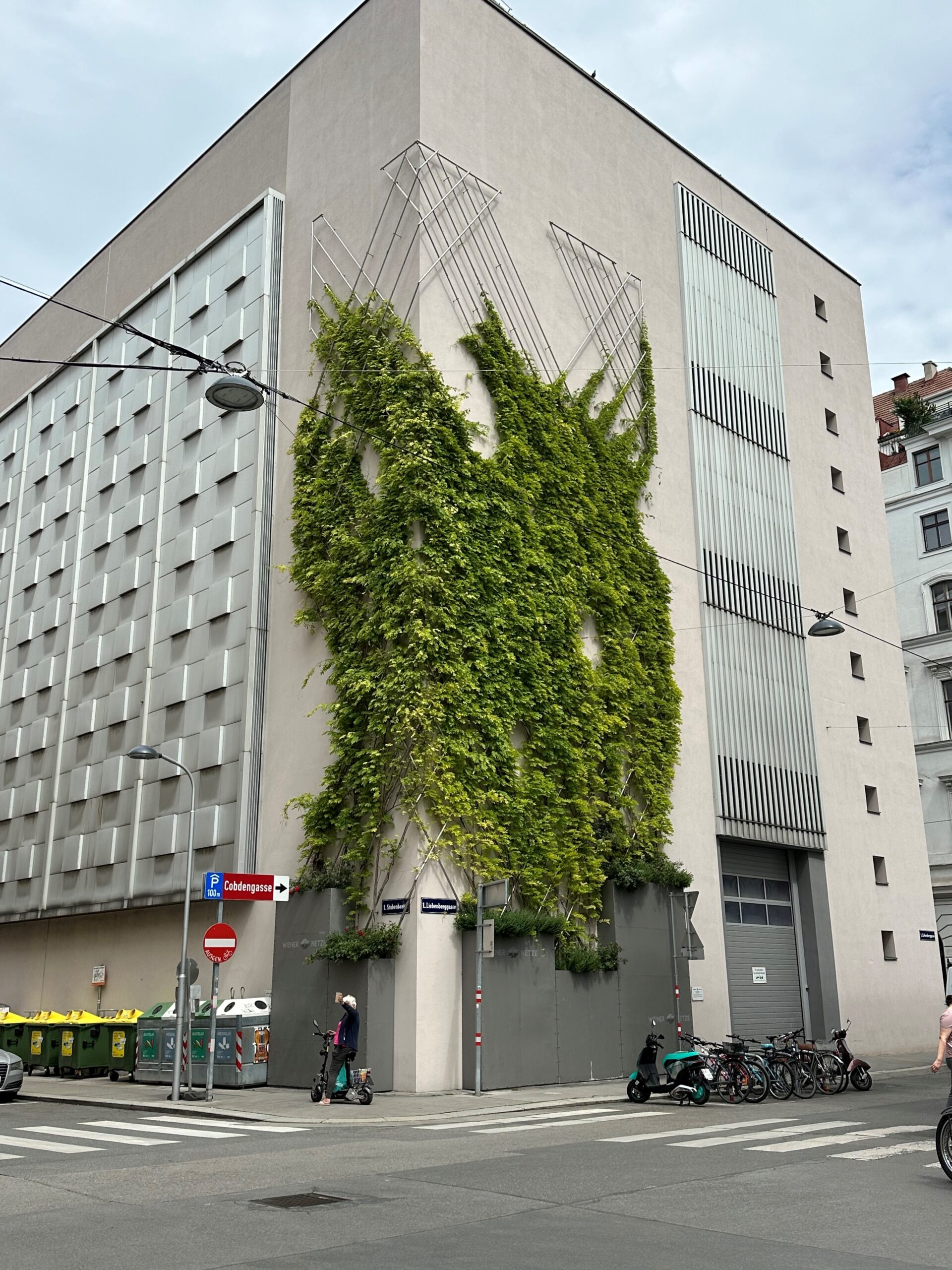Austrian Standard for Vertical Outdoor Greening:
ÖNORM L1136 now Available in English
Directives for planning, maintenance and control
In an exciting development for urban greening enthusiasts and professionals, the Austrian standard ÖNORM L1136 for vertical outdoor greening has officially been published in English. This comprehensive guide, which was previously available only in German, is now accessible to an international audience, further promoting the integration of green infrastructure in cities around the world.
ÖNORM L1136 is a newly established saustrian standard (published in 2021 in German) by the Austrian Standards Institute (ASI) that provides a structured approach to the planning, implementation, maintenance, and control of vertical greening systems in outdoor spaces. It includes the categories such as ground-based with self-climbers or with climbing trellis, plant-trough based and wall-boundes systems.
Vertical greening is essential in cities where space for horizontal gardening is limited. It offers numerous advantages such as improving air quality, reducing noise pollution, enhancing biodiversity, and mitigating the heat island effect in dense urban areas.
Key Components of the Standard
1. Greening Categories
The standard defines 5 categories of vertical greening systems, from ground based with self climbers to living wall systems. This classification helps professionals understand the scale and complexity of different vertical greening projects and select the most appropriate solution for each situation.
2. Design Guidelines
ÖNORM L1136 provides clear directives for the design of vertical greening systems. The greening objective is the basis for the further selsection of the category, systems and plants. Designers are encouraged to consider factors such as local climate conditions, maintenance needs, and aesthetic goals when planning their projects.
3. Construction Details
The standard offers detailed advice on the construction of vertical greening systems, including the necessary quality materials, Climbing aid requirements, minimum distances to the building, the minimum volume for the root space of the plants and many further details.
4. Maintenance and Control
One of the most important aspects of vertical greening is ongoing maintenance in order to reach the greening objective. The new standard sets out a comprehensive framework for the care and maintenance of these systems, including the service level agreement.
With the global push for more sustainable and green urban environments, the publication of ÖNORM L1136 in English represents a significant step toward harmonizing best practices in vertical greening worldwide. The standard provides a unified approach for architects, engineers, urban planners, and landscape designers, helping them to ensure that vertical greening projects are not only aesthetically pleasing but also functionally effective and sustainable.
The availability of the standard in English will also facilitate collaboration across borders, allowing international stakeholders to adopt the guidelines for their own urban greening initiatives. As cities continue to grapple with the challenges posed by rapid urbanization, climate change, and biodiversity loss, vertical greening offers a viable solution to many of these problems.




